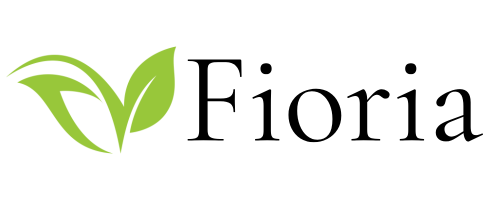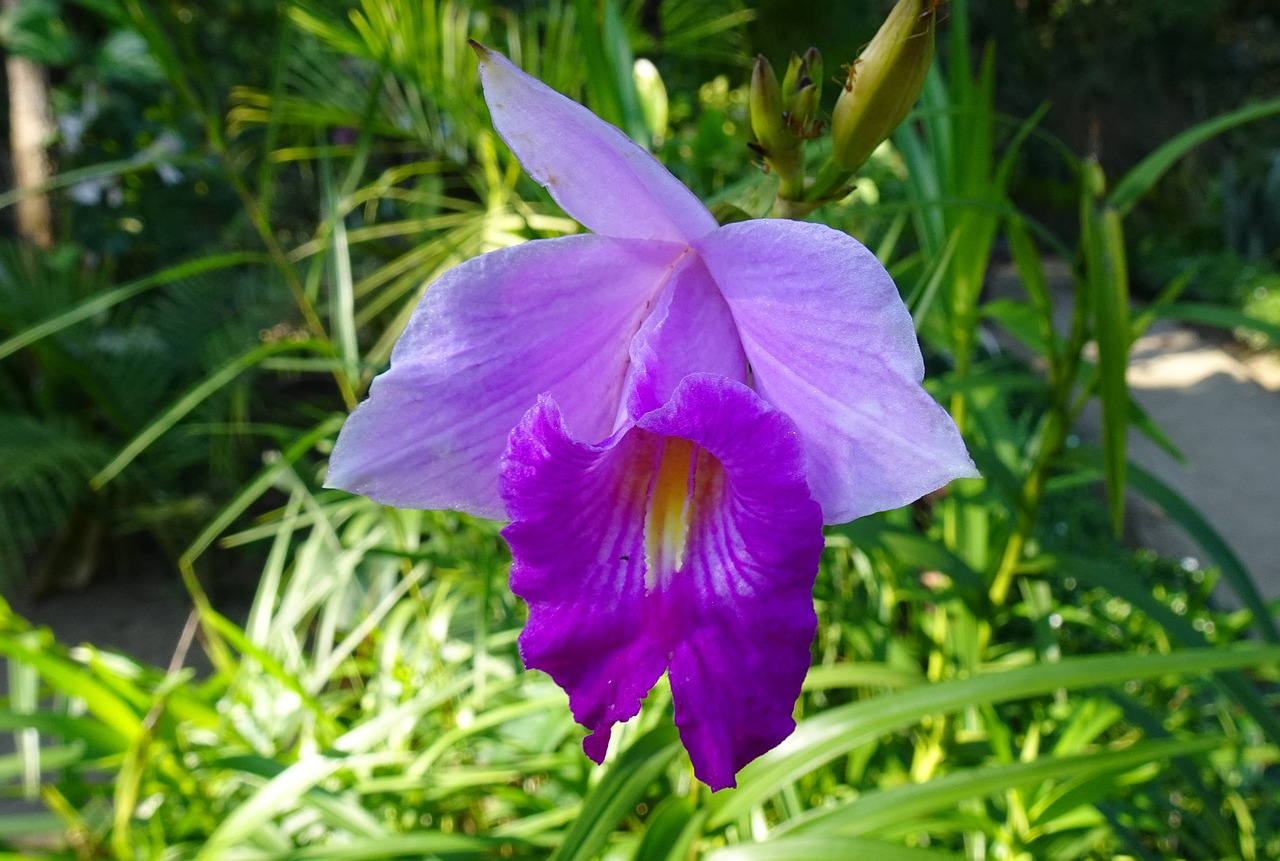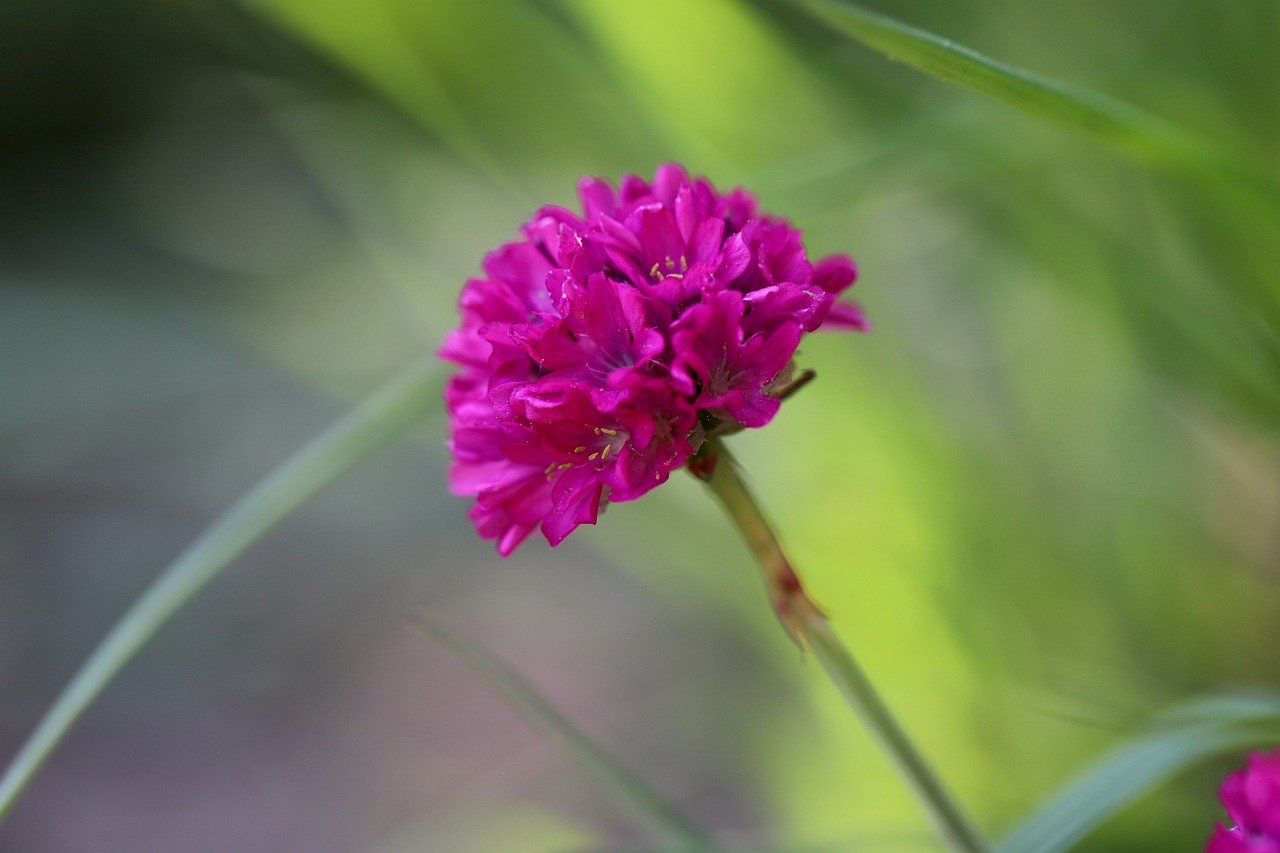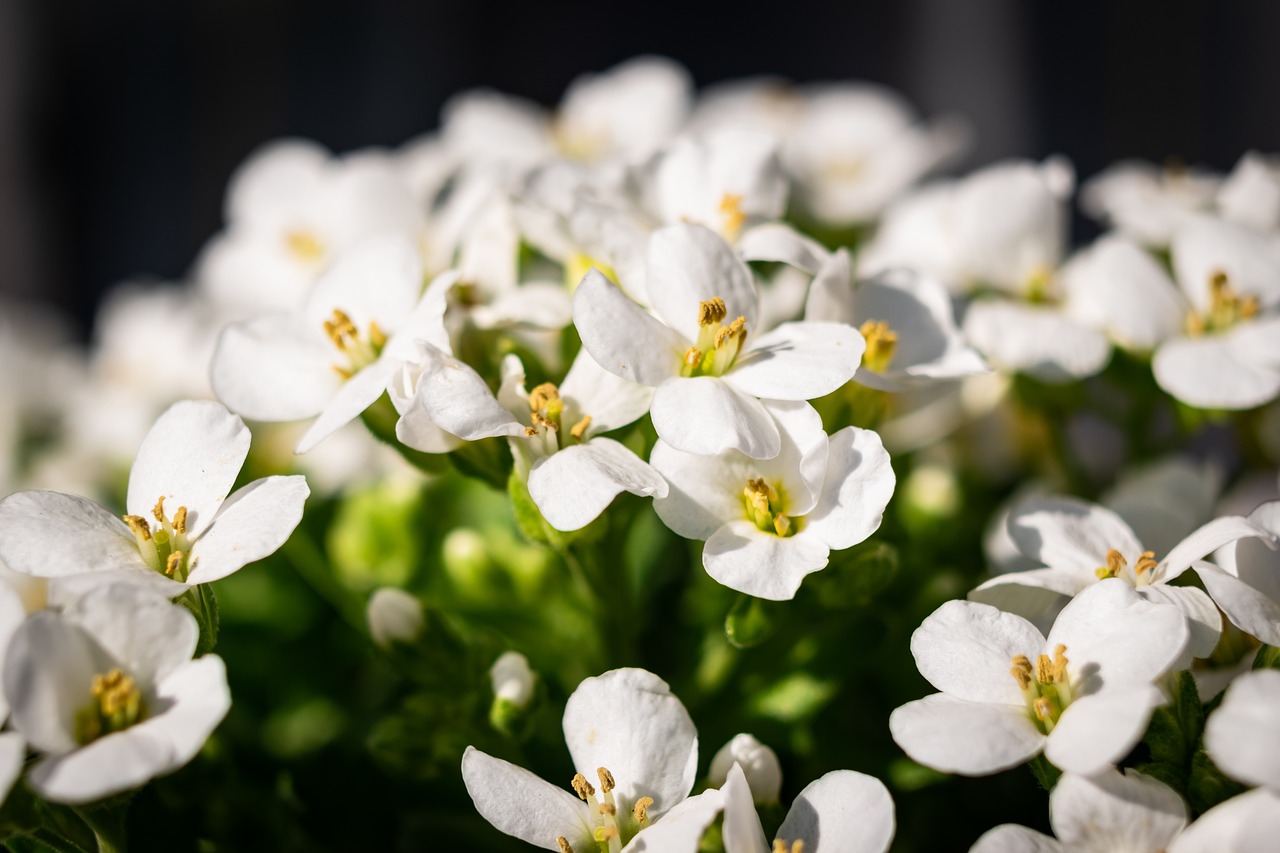Ground Ivy | The Vine Spreading Through Medieval Monastic Gardens

I introduce ground ivy, a perennial plant characterized by its trailing growth and charming bluish-purple flowers.
Because it spreads along the ground, it has long been appreciated as a ground cover. From spring to early summer, its soft-colored blossoms bring a calm and serene impression to the garden.
In this article, I will explain in detail the basic information, cultural background, history, and cultivation of ground ivy.
Basic Information
- Scientific name: Glechoma hederacea
- Family: Lamiaceae
- Origin: Europe to Western Asia
- Appearance: Creeping stems that spread along the ground, producing small bluish-purple flowers in spring. The round leaves have shallow lobes, and both stems and leaves are covered with fine hairs that release a herbal fragrance when touched.
- Blooming season: April – June
Cultural Background
Ground ivy has been used in traditional European gardens and monastic cloisters as a ground-covering plant. Its creeping growth naturally filled the gaps of stone gardens and walls, sometimes serving as an alternative to grass or moss.
In monastic gardens, plants were often selected not only for their practicality but also for their ability to preserve a natural atmosphere. Ground ivy, as a perennial, was part of this tradition.
In Japan, it grows wild along roadsides and fields, and has long been familiar as a plant that announces the arrival of spring. Instead of being cultivated for ornamental purposes, it has been integrated into the cultural landscape as a wildflower.
Historical Episodes
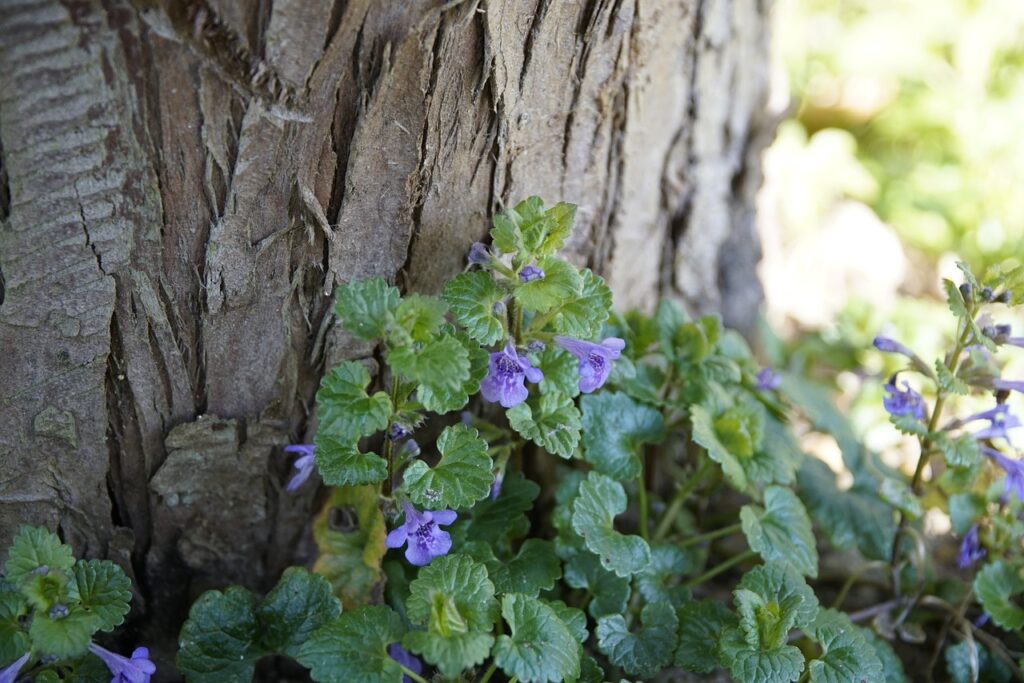
Ground ivy was widely grown in medieval European monastic gardens. Alongside medicinal and edible plants, species that contributed to the garden’s harmony and beauty were also cultivated.
Perennials like ground ivy, with their creeping growth, were valued for naturally shaping the garden space.
From the 17th century onward, as garden culture flourished in Europe, naturally growing wildflowers became increasingly appreciated. Styles such as the English garden and country garden re-evaluated plants like ground ivy.
Gardening Advice
Ground ivy is highly adaptable and grows well even in shaded areas. For natural or woodland-style gardens, keep the following points in mind:
Light
Prefers bright to partial shade. Avoid harsh direct sunlight, which may cause leaf burn.
Watering
In the ground, rainfall is usually sufficient. In pots, water moderately when the soil surface dries. Avoid overwatering.
Soil
Well-drained soil is ideal. Adding compost or leaf mold helps roots spread more easily.
Fertilizer
Use sparingly. A small amount of slow-release fertilizer in spring is enough.
Pruning
Trim back overgrown stems to maintain shape and air circulation, which reduces pests and diseases.
Cold tolerance
Fairly hardy. In mild climates, it remains green throughout winter, while in colder regions it regrows in spring even if the top growth dies back.
Conclusion
Ground ivy is a perennial that produces bluish-purple flowers in spring while spreading across the ground.
In Europe, it has been cultivated since medieval times in monastic gardens, valued as a plant that harmonizes with natural landscapes. In Japan, it is found in the wild and cherished as a seasonal marker of spring.
Because it thrives even in shade, it serves as an excellent ground cover for natural gardens, quietly adding beauty and tranquility to the landscape.
